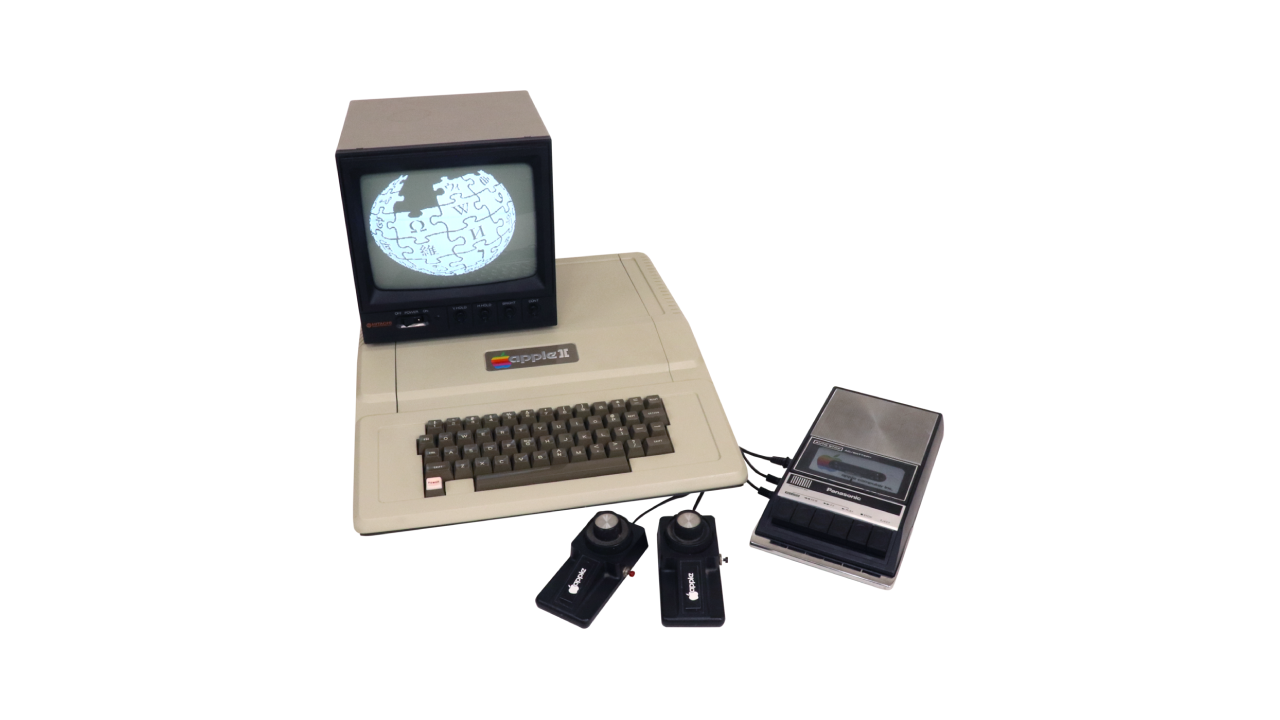 | Introduced: 1977 Terminated: 1980 |
Logic Board
Processor: 6502
Processor Speed: 1 MHz
PMMU: none
FPU: none
Bus Speed: 1 MHz
Data Path: 8-bit
ROM Size: 12K (Monitor + Integer Basic + “sweet 16” mini-assembler)
Expansion Slots: 8 Apple II Proprietary Slots
Battery: none
Memory
Min – Max RAM: 4K – 48K
RAM Sizes: 4K, 8K, 12K,16K, 20K, 24K, 32K, 36K, 48K
Onboard RAM: 4K – 48K
Note:
- RAM can be installed using 4K chips or 16K chips
Ports
I/O Ports:
- Video out (composite), 8 expansion slots, Tape recorder, Paddles
Video
Display Resolution:
- 40 x 40-48 (16 colors), 280 x 192 (4 and later 6 colors)
- 40 columns by 24 rows
- Composite monitor or RF Modulator to TV supported.
Storage
External:
- Audio Cassette Tape or 5.25-inch floppy drives (introduced after the machine went into production)
Internal:
- Not Applicable
Operating System
Primary OS: Apple DOS
Languages in ROM: Integer BASIC
Addressing Modes: 8-bit
Miscellaneous
Form Factor: Apple II
Dimensions (Inches): 4.25 H x 15.25 W x 17.75 D
Average Weight (lbs): 11.5
Original Price:
- A2S0032 (32K RAM): $1295 US
- A2S0048 (48K RAM): $1395 US
Comments
The Apple II was Apple’s first complete home computer sold to the general public. It was truly a computer for the “rest of us”. It was based on Woz’s Apple I motherboard, but came complete in its own case with its own power supply. In order to avoid FCC regulations involving radio frequencies, the Apple II produced a composite signal that could be converted to UHF/VHF to hook to a TV through a third party adapter. This adapter was not available from Apple and not part of the motherboard’s hard-wired architecture. This allowed Apple to produce a powerful machine without having to cripple the disk drives or any other peripheral due to the restrictive rules governing radio signals, which hampered the designs of many of its competitors including Tandy, Commodore, and Atari.
